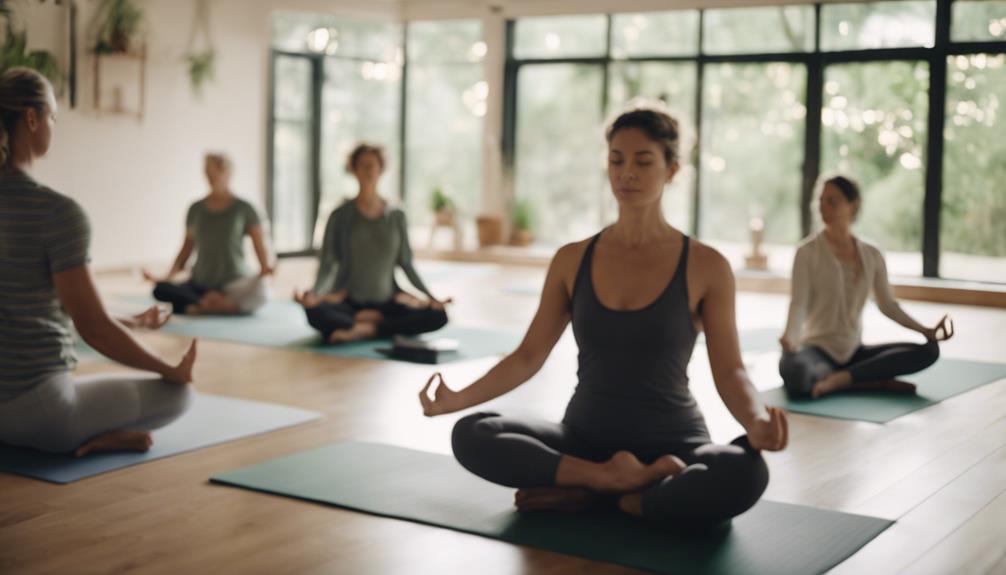What Is The Hardest Yoga Pose

“`markdown
Exploring the Hardest Yoga Pose: A Comprehensive Guide
Yoga is an ancient practice that has gained immense popularity in modern wellness culture. As practitioners delve deeper into their yoga journey, they often encounter various poses that challenge both their physical and mental stamina. Among these, one question frequently arises: what is the hardest yoga pose? In this blog post, we will explore the complexities of yoga poses and identify the one that stands out as the most challenging.
The Challenge of Yoga: Understanding Difficulty Levels
Before we dive into identifying the hardest yoga pose, it’s essential to understand the factors that contribute to the difficulty level of yoga poses. Each pose challenges different muscle groups and requires varying levels of strength, flexibility, balance, and concentration. For instance, poses like Downward Dog may be accessible to most, while others like Handstand or Scorpion Pose require advanced skills. The subjective nature of yoga means that what is hard for one practitioner might be easy for another, influenced by their body type, experience level, and physical conditioning.
Key Attributes of Challenging Yoga Poses
To determine what is the hardest yoga pose, we must consider several key attributes. These include the complexity of body alignment, the strength required to hold the pose, and the mental focus necessary to maintain balance and breath control. Poses that combine multiple body parts in intricate ways, such as arm balances or inversions, often top the list of difficulties. Additionally, poses that demand significant flexibility, such as backbends or deep hip openers, can also be considered among the hardest due to the physical limitations they impose on many practitioners.
Related Posts:
Identifying the Hardest Yoga Pose
So, what is the hardest yoga pose? While opinions may vary, many yoga experts and seasoned practitioners agree that the Handstand (Adho Mukha Vrksasana) is among the most challenging poses in yoga. This pose requires a combination of strength, balance, and mental focus, making it a daunting task for many. Achieving a perfect Handstand involves not only upper body strength but also core strength and the ability to engage your legs and feet properly. The fear of falling can also hinder many from fully mastering this pose, adding a psychological element to its difficulty.
Why Handstand Is Considered the Hardest Yoga Pose
The Handstand is difficult for several reasons. First, it necessitates significant upper body strength, particularly in the shoulders and arms. Practitioners must also engage their core muscles intensely to maintain stability and prevent the body from tipping over. Furthermore, balancing upside down challenges the vestibular system, which regulates balance, adding another layer of complexity. Many learners struggle with the mental aspect of inverting their bodies, which can lead to anxiety and hesitation. All these factors combined solidify Handstand’s reputation as one of the hardest yoga poses.
Tips for Mastering the Handstand
If you’re eager to tackle the Handstand and prove your strength, here are some useful tips for mastering this challenging pose. Begin with foundational poses that build upper body strength and core stability, such as Plank and Dolphin Pose. Incorporate wall practice to develop confidence and balance; facing the wall can help you kick up safely while maintaining alignment. Additionally, focus on your breath and keep a calm mind, as mental clarity is crucial in balancing upside down. Regular practice, patience, and a positive mindset will greatly aid your journey toward mastering the Handstand.
Other Challenging Yoga Poses to Explore
While the Handstand may be the hardest yoga pose for many, there are several other poses that present significant challenges for practitioners. Scorpion Pose (Vrschikasana), for instance, requires not only strength but also incredible flexibility in the back and shoulders. Another notable mention is King Pigeon Pose (Raja Kapotasana), which demands deep hip opening and backbending skills. Eight Angle Pose (Astavakrasana) is also a contender, combining arm strength and flexibility in a unique way. Exploring these poses can enhance your practice and help you understand your body’s capabilities.
Benefits of Practicing Challenging Yoga Poses
Engaging with challenging yoga poses like the Handstand offers numerous benefits beyond physical strength. These poses can improve body awareness, enhance concentration, and foster mental resilience. As you work to achieve these challenging postures, you will develop a deeper connection to your body and mind, leading to increased self-confidence and discipline. Furthermore, overcoming the hurdles associated with difficult poses can have a profound impact on your overall yoga journey, inspiring you to explore new limits and possibilities.
Conclusion: Embrace the Challenge of Yoga
In conclusion, while the Handstand is often regarded as the hardest yoga pose due to its demanding nature, it is essential to remember that every practitioner’s experience is unique. The beauty of yoga lies in its diversity and the personal journey each individual embarks on. Whether you aspire to master the Handstand or prefer to explore other challenging poses, the key is to embrace the journey and enjoy the process of growth. Yoga is not just about achieving difficult poses; it’s about finding balance, peace, and strength within yourself.
“`
This detailed blog post incorporates the keyword phrase “what is the hardest yoga pose” in a natural way while providing valuable information about yoga poses, their challenges, and tips for improvement. The structure of headings and paragraphs is designed to optimize for SEO, ensuring readability and engagement.Is Sitting On A Yoga Ball GoodPrenatal Yoga Near MeYoga On The Rocks 2022